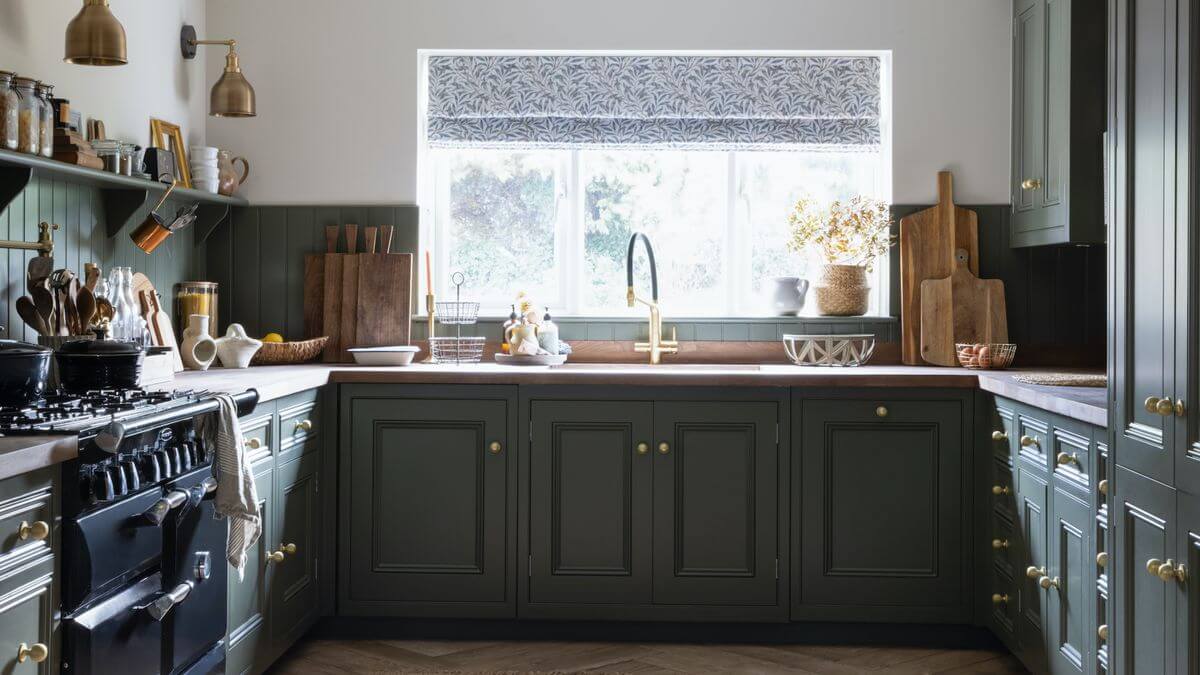Walk into any modern kitchen showroom and you’ll see pristine counters, glossy tiles, and appliances so polished they practically wink at you. But for many of us, that gleam can feel a little soulless. A kitchen doesn’t need to look like a magazine cover to feel like home. In fact, some of the most inviting kitchens are made of mismatched pieces, forgotten treasures, and items with stories attached.
There’s something deeply satisfying about bringing second-hand items into the most-used room in your house. Not just because it saves money—though that’s a huge plus—but because it makes the space feel lived-in, real, and uniquely yours. A slightly scuffed wooden stool or a vintage spice rack might not be “perfect,” but that’s exactly the point. These aren’t just objects; they carry whispers from other homes, other kitchens, other lives.
Choosing second-hand over shiny-new is also a quiet act of sustainability. Instead of adding more waste to the world, you’re giving new life to something already made. And in many cases, the craftsmanship of older pieces is leagues above what you’ll find in mass-market flat-pack kits.
If you’re hesitant, you’re not alone. People worry that used equals dirty or that a mix of styles will look chaotic. But here’s the truth: with a little care and an eye for balance, your kitchen can feel both collected and cohesive.
Some of the best places to look? Try garage sales early on a Saturday morning. Wander through flea markets with a strong coffee in hand. Keep an eye on restaurants or cafés that are closing down—you’d be surprised what they let go. And don’t underestimate Facebook Marketplace or local estate sales; sometimes the perfect piece is sitting just a few streets away.
The Hunt and the Haul – What to Look For and How to Spot a Gem
It’s easy to feel overwhelmed the first time you walk into a yard sale or scroll through an online listing with hundreds of items. But part of the fun is the thrill of the hunt—finding that one item you didn’t know you needed until you saw it.
Start small. You don’t need to revamp your entire kitchen in one go. Think lighting, hardware, or storage touches that shift the mood without knocking down a wall. Pendant lights from the ’70s, wrought-iron drawer pulls, colorful canisters—these little touches create a huge impact.
There’s also magic in vintage cookware. Enamel pots with charming chips, cast iron pans that just need a good scrub, or glass dishes that look like they came out of your grandmother’s cabinet. They tell stories and add texture to open shelving or glass cabinets.
If you’re ready for a bolder move, keep your eyes peeled for the big stuff. Restaurant closures are perfect for grabbing well-made items that can anchor a kitchen. Think stainless steel work tables, butcher block counters, or even restaurant furniture that you can rework into an island or a cozy breakfast setup. A high-top bar table can make an incredible prep station. Those old wooden chairs? Sand them down and let them live again.
Before buying, ask a few questions:
- How old is this?
- Was it used in a commercial space?
- Has it been stored indoors?
- Is it structurally sound or just pretty?
Quality matters. Check for wobbles, warping, rust, or hidden damage. Open drawers, sit on chairs, flip things over. Bring a tape measure and don’t be shy about inspecting closely.
And when it comes to price, don’t hesitate to negotiate—kindly. Sellers often appreciate polite haggling. If you’re picking up a few things, ask for a bundle deal. Having cash can help seal the deal quickly.
Cleaning, Refinishing, and Repurposing Without Losing Your Mind
Once your finds are home, the real transformation begins. First step: give everything a proper clean.
Each material needs its own care. Wood? Mild soap and water, then dry fast. Cast iron? Scrub with coarse salt and oil, skip the water. For stainless steel, vinegar and a soft cloth work wonders. And enamel? A gentle baking soda paste helps lift old stains.
Avoid going overboard. Bleach can ruin vintage paint. Steel wool might scratch where you don’t want it. Take it slow—some things just need a little patience and elbow grease.
Refinishing doesn’t need to be a professional job. A simple sandpaper block and a fresh coat of stain or sealant can breathe life back into tired wood. A can of matte spray paint can turn a rusty metal shelf into something sharp and modern. If a surface will see water or food, make sure you seal it with something kitchen-safe.
The fun part? Repurposing. Bar stools can be turned into plant stands or used as floating shelf brackets. An old drawer becomes a rustic spice rack. Vintage trays can be mounted to the wall and fitted with hooks or magnets.
Just be cautious with electric pieces—if you’re unsure, have an electrician give it a look. And with any food-contact item, make sure it’s safe to use. Some older ceramics or plastics might contain materials that aren’t up to today’s standards.
Styling It All Together – Balance Without Losing Personality
When you’re working with second-hand finds, the key is to create cohesion without falling into chaos. You want charm, not clutter.
Start by picking a loose theme: warm woods and soft whites, or maybe industrial metal and black accents. Stick with one or two materials across your kitchen—say, brushed brass and natural wood—and mix in other items around them. This helps anchor your space visually.
It also helps to let one or two items shine. Maybe it’s an old baker’s rack that holds all your dishes, or a bright red vintage toaster you found in perfect condition. Whatever it is, give it room. Don’t crowd the space with too many competing pieces.
Integrating modern appliances into a vintage kitchen is all about framing. A new fridge looks much more at home surrounded by wooden open shelving or nestled between repurposed cabinets. Even a sleek dishwasher can fade into the background with the right panel or a strategically placed curtain.
Here are three common styles that work beautifully with second-hand items:
- Farmhouse Cozy: Light woods, cream ceramics, gingham dish towels, and old enamelware.
- Retro Charm: Bright Formica tables, diner stools, chrome edges, and funky wall art.
- Urban Industrial: Exposed bulbs, metal shelving, rough-cut wood, and concrete accents.
Whatever your style, the heart of it should feel like you—not a trend.
Found Pieces, Real Kitchens
Talk to anyone who’s furnished their kitchen this way, and you’ll find they don’t just love the way it looks—they love the stories behind it.
Take Marissa, who found a stainless steel prep table from a bakery that was closing. It was dented, covered in flour dust, and shoved in a dark corner. She hauled it home in her cousin’s pickup, scrubbed it down, and now it’s the heart of her kitchen—used daily for chopping veggies and kneading bread.
Or Kevin and Joe, who stumbled on two red vinyl booths at a restaurant liquidation sale. They cleaned them up, bolted them to the wall under their kitchen window, and now their morning coffee feels like something out of a vintage diner.
Then there’s Rina, a part-time interior decorator who swears by flea markets. Her rule? One standout piece in every room. In her kitchen, it’s a massive hand-painted tile mural she found behind a pile of garden gnomes at a salvage yard. It took her six months to build the rest of the room around it.
These kitchens didn’t come from catalogs. They came from curiosity, elbow grease, and a little luck.
Getting Started – What You Actually Need
You don’t need a garage full of tools or a background in carpentry to start transforming your kitchen. Just gather a few basics:
- Tape measure
- Screwdrivers
- Gloves
- A mild cleaner and cloths
- Sandpaper or a sanding block
- A can or two of good paint
- Wood filler (for small repairs)
- Sealer if you’re refinishing countertops or wooden shelves
It’s also smart to bring inspiration photos when you shop and keep a flashlight handy for dim corners of thrift stores and garages.
And your budget? You can get surprisingly far on $500 if you’re patient. One or two key pieces, a few smaller accents, and some DIY love can shift the entire feel of your kitchen.
So go ahead—skip the showroom. Charm isn’t something you buy in a box. It’s something you find, clean up, and make your own, one salvaged piece at a time.

